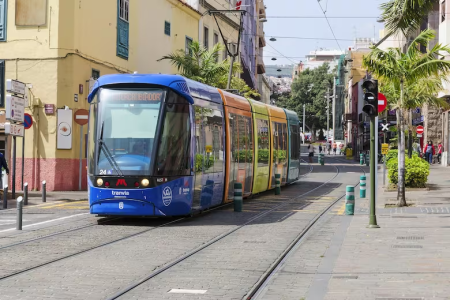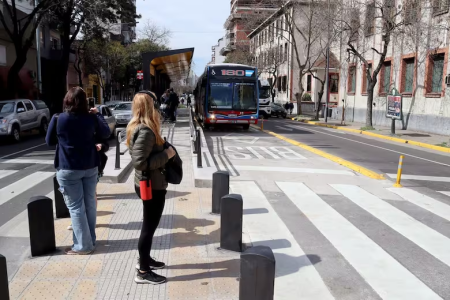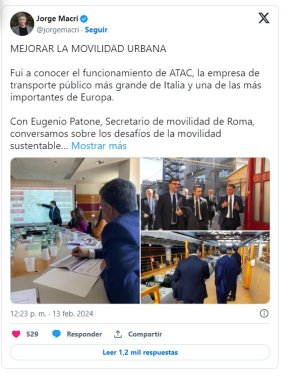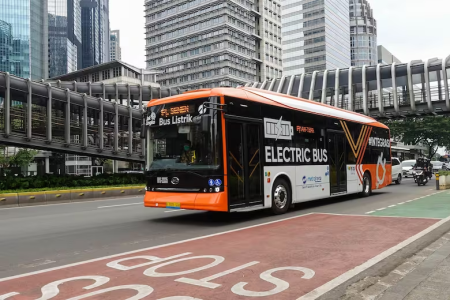amyang
Member
The decarbonization of public transport is the goal that the Buenos Aires Government set, with several options that could be applied under this concept -La Nación

Source:
Las nuevas modalidades de transporte que se estudian en la Ciudad y el ocaso de un sistema que “está agotado”
La descarbonización del transporte público es el norte que se puso el Gobierno porteño, con varias opciones que podrían aplicarse bajo este concepto
The era of metrobuses seems to be behind us. The exclusive lanes on Juan Bautista Alberdi and Directorio avenues , inaugurated last September, were perhaps the last to be deployed in the city of Buenos Aires. The model was sold out. This is how the new Buenos Aires administration considers it: generating others would mean forcing and straining the system. Instead, the Government plans new strategies that, some of them, require greater planning, review of already installed infrastructure and analysis of territories to determine where and how to apply them.
Although there is already a Sustainable Mobility Plan for 2030, and during the campaign Jorge Macri announced his intentions to raise the Sarmiento train tracks , there are other alternatives that are being evaluated, mainly in the brand new Ministry of Infrastructure that absorbed the former Ministry of Infrastructure. Transportation and Public Works. The ideas are in a germinal state and the optimism for them to come to fruition varies week by week when progress is made on deep issues, for example, the budget to carry it out . But they continue to be analyzed to be implemented in the next four years.

Tenerife, in Spain, is one of the many European cities that has an electric tramvasanty
Some could be included in the opening speech of legislative sessions that Macri will give in the Legislature. And they were also part of the agenda of the Head of Government on his trips abroad, in Italy precisely, where he attended the canonization of Mama Antula in Rome . There the official met with transport leaders in Rome in a meeting where they exchanged projects and ideas about trams and electric buses . A transportation system that already works in Rome and that is planned to be promoted and installed in the city of Buenos Aires .
The decarbonization of public transport is the direction that the city government set itself with several options that could be applied under this concept, such as the progressive electrification of public transport, the creation of circuits that are traveled with electric buses and binding traces through trams. The Historic Center and the northern corridor, from Ciudad Universitaria to Puerto Madero, are the alternatives under study .

The metrobus on Alberdi and Directorio avenues may have been the last of the exclusive lanes put into operation in the city
The City understands that there are already enough metrobuses in operation and that expanding the subway network, for now, is unattainable due to costs . That is why it focused its attention on trams and electric buses, among other more sustainable variants than combustion vehicles. Among the changes, the City is also reviewing the network of cycle paths and bike paths, which since its launch in 2009 reached an extension of 300 kilometers. Will Del Libertador Avenue be intervened? It's a posibility .
“With Eugenio Patone, Secretary of Mobility of Rome, we talked about the challenges of sustainable mobility in cities. "I was seeing how the city's public transportation system works and its network of trams and electric buses that circulate through the historic center, which I evaluate implementing in our city to improve the mobility of the people of Buenos Aires," Macri explained on social networks after the meeting.

Madrid, Barcelona, Zaragoza, Malaga and Seville are Spanish cities that have these systems that are also used in Germany, Holland, France, Italy and other European countries. In the region, Chile and Brazil are some of the countries that are also testing these alternatives, as happened in the city with bus line 59 . If an electrical system with a longer distance and fleet is implemented, it would be a milestone and a paradigm shift towards where the world travels: the use of renewable energy in public transportation .
According to the Sustainable Mobility Plan for 2030, the approximately 3,000,000 inhabitants of the City are joined by 1,400,000 who enter every business day (compared to the 200,000 Buenos Aires residents who go to the suburbs). 5,400,000 trips are made daily with the following distribution: 46.7% in public transportation, 20.7% in private motor vehicles; 26.1% on foot; 3.6% by bicycle; and 2.2% in shared motor vehicles.
New way
“Using more sustainable energy is a positive thing, it's fine, but the question is whether the problem really lies there. It is true that transportation generates a lot of emissions and environmental problems, but the biggest problem is not generated by public transportation in terms of emissions and environmental pollution, but rather by private cars," said the specialist in urban development and transportation, Sebastián. Anapolsky .“The proportion of public transport vehicles over private vehicles is tiny. It is not bad to do it if we can reduce noise because many times noise pollution is a serious problem in our cities, but is it the most important priority when there is a difficulty to improve access to public transport, to make more people travel by public transport? and that fewer people use private vehicles?

In Jakarta (Indonesia) the electric bus is commonly used as an alternative form of transportationGood upc
Anapolsky advises governments and international organizations to design and implement projects in cities and metropolitan areas linked to public transportation and urban planning. From his experience, he maintains that electric tram systems, as is the case in all European cases, must be accompanied by infrastructure consistent with other means of transportation .
“If the only thing we do is change a gasoline engine for an electric motor, we are not solving anything. The bus continues to operate on the same street, with the same frequency, and carries the same number of people, even though it is electric. A bus or tram in hundreds of thousands of cars will not change pollution, it will not make an important difference in environmental issues,” he said.
As Pablo Belenky, civil engineer and transportation planner , explains, many cities are moving towards technologies that limit the use of fossil fuels and in that search there are two large groups: those that have resources (European countries) and those that add environmental problems (Santiago from Chile, for example). Hydrogen cells, electric mobiles (battery-powered), catenary electric (trams), or CNG are the ones used .
“New technologies are more expensive than the current one (internal combustion engines) and observe permanent evolution, so there is an enormous risk of early obsolescence. Alternative units are more expensive and so are maintenance costs, which is why it should be thoroughly analyzed if there are operational savings,” he advised.
As part of the process that begins in Buenos Aires, the expert recommends waiting for alternative technologies to mature “until they obtain greater reliability, lower costs and lower risk of obsolescence” since “the local situation makes the introduction of new technologies difficult.”
The City intends to get on the train of the paradigm changes that are occurring in public transportation worldwide. The economic context forces the government to do the math, calculate costs, project, change and project again. The path seems to have begun.
By Mauricio Giambartolomei

